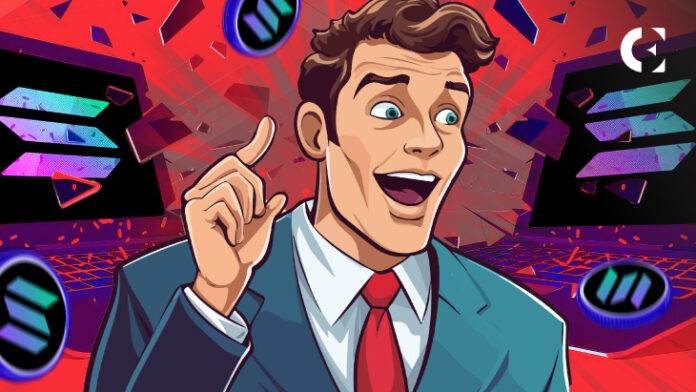Many blockchain and cryptocurrency customers have an interest within the development of Solana. However whereas respected builders depend on the scalability-focused blockchain, crypto fraudsters make the most of new customers to take advantage of them.
Phishing scams and rug pulls are frequent on the Solana community, with dangerous builders creating crypto options to steal from the unsuspecting public. Solana group members subsequently must know the right way to differentiate between real blockchain options and scams.
Although customers are extra conscious of phishing scams and the right way to keep away from them, cryptocurrency thieves have discovered extra refined methods to steal cash with out extended interplay. For instance, a Solana person reported being exploited by merely clicking a hyperlink in an X publish. The person stated the scammer was capable of entry their pockets and withdraw their tokens with no need any authorization.
So, crypto customers utilizing blockchain networks like Solana must know the right way to keep away from scammers and make the most of the rising alternatives within the Solana blockchain ecosystem. Blockchain customers, particularly these accustomed to the Ethereum Digital Machine (EVM), ought to perceive the distinction when utilizing the Solana community. Utilizing the identical concepts of EVM may depart Solana customers susceptible to hacks.
Distinction between authorization and signature
One strategy to keep away from scams and exploits on the Solana community is to know the distinction between authorization and signing. In case you are a Solana community person, it is very important perceive and use these essential options when transacting. Authorization applies to tokens and NFTs, giving permission to particular addresses to work together with specific tokens.
In the meantime, the Solana community makes use of signatures when sending transactions and signing messages to show account possession. It’s just like the approved signature used to verify transactions in the true world. A signature can embody an authorization, however the authorization requires {that a} signature be accomplished. Thus, signing is the final layer of safety on the Solana community.
Differentiate between Solana and EVM
Since EVM is fashionable and customers might imagine that blockchain protocols work the identical means, it is very important perceive the variations between Solana operations and the way EVM works. Not like EVM, transactions on Solana don’t require prior authorization.
With EVM, phishing contracts require person authorization earlier than tokens might be transferred. This permission permits them to provoke transactions and steal property from customers. The “approve” step, which is usually confused with authorizing the token, really permits transactions to undergo. This exposes person property to exploitation and makes it troublesome to get better them.
So, to keep away from phishing assaults on Solana community, customers want to grasp these steps and the way they differ from EVM.
How one can forestall scams on Solana
Use the portfolio transaction simulation function
Every Solana token has a particular account with possession attributes, which, by default, is the present proprietor of the pockets. One factor hackers do is trick customers into transferring possession of the tokenized account to their pockets. When this occurs, the person loses management and the tokens are stolen.
Utilizing transaction simulation options permits customers to overview transactions earlier than they’re accomplished. This fashion, wallets can discover and alert customers to dangerous transactions, requiring a second affirmation.
Keep away from a number of token transfers
Though Solana permits you to consolidate a number of token transfers right into a single transaction, this may be dangerous. Whereas handy, this function, if not used rigorously, may permit hackers to steal all of a person's property in a single transaction.
You must rigorously test every transaction to make sure that it doesn’t comprise a number of tokens. It may be a bit annoying, however it's higher to be secure than sorry.
Watch out of fraudulent transaction signatures
Solana has a function known as Sturdy Nonce. This function permits you to signal and broadcast a transaction sooner or later. That is one in all Solana's options designed to make blockchain transactions extra versatile and handy. Nonetheless, hackers have discovered methods to trick Solana customers into signing transactions that seem safe.
With this exploit, hackers wait till they’ve obtained the signatures, then improve the contract with malicious code earlier than broadcasting the transaction to switch the property to their pockets. Which means that customers could discover that cash is lacking from their pockets a number of days after making a transaction.
To keep away from the Fraudulent Transaction Signature exploit, don’t signal unclear transactions that you don’t totally perceive. Use simulation instruments to test the dangers of transactions earlier than signing them. You can even use a {hardware} pockets to retailer your property, which might help you add an additional layer of affirmation to your transactions.
Conclusion
There are lots of tokens on the Solana community, all utilizing the blockchain's SPL token commonplace. Solana's scalability, amongst different qualities, has attracted builders who’re constructing completely different classes of blockchain tasks on the community. The variety of tokens and their newness make it troublesome for merchants to distinguish between real and pretend tasks.
In case you are a dealer or investor, it’s most secure to deal with SPL tokens on respected exchanges, particularly those who have turn out to be fashionable and backed by well-known groups within the blockchain trade. Tasks like Fantom (FTM), Raydium (RAY), and Jito (JTO) are among the well-known innovations on the Solana blockchain. However there are additionally 1000’s of different tasks, together with memecoins, that carry out effectively on the community and supply customers with important revenue alternatives.
Disclaimer: The knowledge offered on this article is for informational and academic functions solely. The article doesn’t represent monetary recommendation or recommendation of any form. Coin Version will not be accountable for any losses ensuing from using the content material, services or products talked about. Readers are suggested to train warning earlier than taking any motion associated to the corporate.
